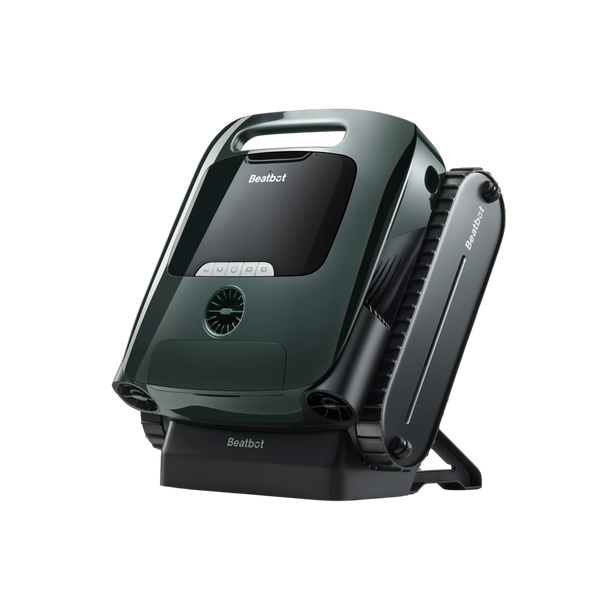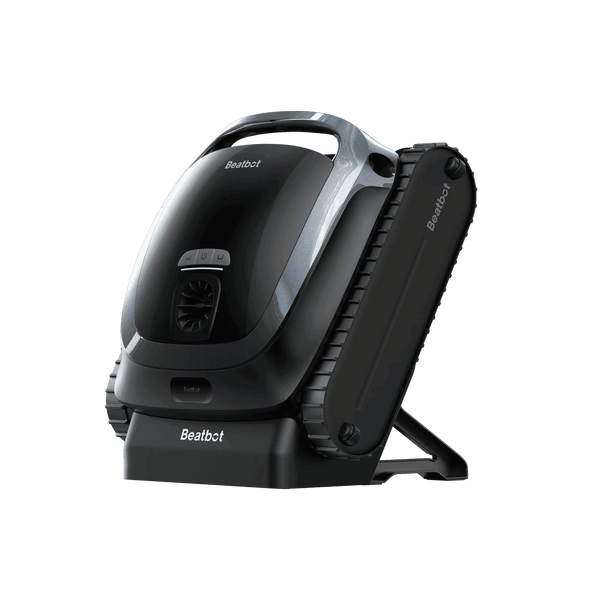The Backwashing Process - A Comprehensive Guide to Revitalizing Your Pool Filter
Getting your pool water crystal clear shouldn't feel like rocket science. But when your filter gets clogged, even perfect chemistry won't help. Here's the deal - backwashing keeps your filter running like new, and it's easier than you'd think. Most pool owners shy away from this task, thinking they'll break something. Trust me, you won't. Your filter's built for this.Just imagine, you've got a glass of muddy water and a coffee filter. After filtering once, the filter gets clogged. That's exactly what's happening in your pool filter, just on a bigger scale. But unlike that coffee filter, you can clean and reuse your pool filter through backwashing. Pretty neat, right?

Why Your Pool Needs Backwashing
Your pool filter works non-stop to catch everything that falls into your pool. Dead bugs? Trapped. Sunscreen residue? Caught. Microscopic algae? Nabbed. But here's the thing - all that trapped gunk builds up. Without backwashing, your filter turns into a clogged mess.Think about your home's AC filter. Leave it too long, and your AC struggles to push air through. Same thing happens with your pool filter. When debris piles up, your pump works overtime, eating up electricity and wearing itself out. Regular backwashing saves you money on:
- Lower electric bills from an efficiently running pump
- Fewer replacement parts from reduced system strain
- Less chemical use since your water circulates better
- Extended filter life from proper maintenance
Signs It's Time to Backwash
Ready for some pool detective work? Your filter drops plenty of hints when it needs backwashing. The pressure gauge tells the biggest story - watch for a jump of 8-10 PSI above your filter's normal reading. Jot down the normal pressure when your filter's clean. That number becomes your baseline.Notice weak water flow from your returns? That's your filter crying for help. When water barely ripples from the returns, your filter's probably packed with debris. Cloudy water that won't clear up, even with perfect chemistry, screams "backwash me!"Don't ignore these signs. A clogged filter forces your pump to work harder than needed. Plus, trapped debris can compact, making it harder to remove later. Sometimes your pool might need two backwash cycles to get back to peak performance. That's totally normal - just watch your pressure gauge between cycles.However, filter pressure gauges are not always very reliable and tend to fail sooner than later on inexpensive filters also. Here are some more signs your filter is dirty and needs backwashing or to be cleaned:
- Weak water out of the return jets: When low water flows through any backwash filter or the pump, this means you need to backwash or clean it. PSI normally goes up when the flow-rate comes down.
- Cloudy Pool Water: If your water is cloudy, or you can see visible debris inside the water that your filter should have filtered, that can be a signal of poor filtration.
- Following Heavy Rain or Debris: If your pool water has a lot of dirt or debris, due to a big downpour for example, you may need to clean your filter.
Step-by-Step Backwashing Process
Skip the guesswork - here's your straightforward guide to backwashing. But first, locate your filter's pressure gauge and check the reading. Mark down this number somewhere handy.
Before You Jump In
Put safety first. Turn off your pump. You'll wreck your system trying to change valve positions while water's flowing. Got kids? Tell them the pool's off-limits until you finish.
The Actual Process
Set your multiport valve to "backwash." You'll hear a click when it's in position. This will help remove sand from your lines before the water flows back into your pool. If you don’t have a rinse setting, use the waste setting. Turn your filter back on and rinse the filter for about 30 seconds.Now fire up that pump again. Watch your sight glass - the water starts dirty but gradually clears up. That's your sign things are working.Keep an eye on that pressure gauge during the process. Too much pressure means something's wrong - shut it down and double-check your valve position. Once the sight glass shows clear water, kill the pump and rinse. Skip the rinse cycle, and you'll blast dirty water right back into your pool.
Common Backwashing Mistakes
Let's talk about what not to do. Backwashing daily? Stop that right now. Your filter needs some dirt to work properly - think of it like seasoning a cast-iron pan. The additional debris that gets stuck in your filter aids in trapping smaller particulates. If you backwash after every session you may release small particles into the water. Action of backwashing stir up the sand and sand particles allow small dirt to pass through and into the pool. Although almost everyone will tell you that you should backwash your filter once a week for pool season, this is not entirely needed. When you backwash you lose a lot of water. Keep in mind that it is not a problem to have some debris in the filter. Too much cleaning actually reduces filtering efficiency.Running your backwash cycle forever won't help either. Three minutes usually does the job. Longer doesn't mean cleaner - it just wastes water and puts unnecessary stress on your system.Here's a weird one - some pool owners backwash after adding chemicals. Bad move. You're literally washing away the chemicals you just paid for. Wait at least 24 hours after chemical treatments.The pressure gauge doesn't lie. Learn its language. If it jumps more than 8-10 PSI above normal, that's your cue. Ignore these pressure spikes, and you're asking for expensive repairs down the road.
Different Filters, Different Rules
Sand filters love a good backwash - they're built for it. But cartridge filters? They need a different approach completely. Forcing a backwash through a cartridge system spells disaster.DE filters get tricky. They need fresh DE powder after backwashing. Skip this step and watch your water turn cloudy fast. The trick? Add the DE through your skimmer - never dump it straight into the pool.Your sand filter might only need backwashing every few weeks. DE filters get needier - think twice monthly at least. Weather plays a role too. After storms, your filter works overtime catching extra debris. Show it some love with an extra backwash cycle.Want crystal clear water? Match your cleaning schedule to your pool's needs. Heavy swimmer load means more frequent backwashing. Running your pool part-time? You might stretch the intervals longer.
Troubleshooting Guide
System still acting up after backwashing? Let's fix that. First, check your pump basket. Leaves and debris here block water flow, no matter how clean your filter is. Empty that basket, and you might solve half your problems.Strange noises during backwashing? That's air in your system. Shut everything down and prime your pump. Air locks kill performance and can damage your equipment. Sometimes the fix is as simple as topping off your pool water level.Dirty water returning to pool? Your laterals might be cracked. These are the fingers inside your filter that catch debris. They break down over time, especially in areas with harsh winters. Replacing them isn't fun, but it beats buying a new filter.
Setting Up Your Maintenance Calendar
Forget rigid schedules - your pool has its own personality. Heavy tree cover means more frequent backwashing. Pool parties kick up extra dirt. Even wind patterns affect how often you'll need to backwash.Create a cleaning routine that fits your pool's lifestyle:
- Write down normal pressure readings each season
- Track how long between backwash cycles
- Note weather patterns that affect your pool
- Monitor swimmer load and its impact
Hot tip: Get a waterproof notepad for your equipment room. Jot down pressure readings and backwash dates. This simple log helps spot patterns and prevents problems before they start.
Performance Tips
Cut your filter some slack - it's not perfect. Even with regular backwashing, you'll still need to vacuum occasionally. Think of backwashing as maintenance, not miracle work.Check those O-rings on your multiport valve. Tiny leaks here waste water and reduce efficiency. A little silicone lubricant twice a year keeps everything sealed tight.Considering an upgrade? Modern filters often include better pressure monitoring and more efficient backwash cycles. But don't rush to replace a working system - proper maintenance beats fancy features any day.Keep spare gaskets handy. They're cheap insurance against leaks. And always - always - check local water restrictions before backwashing. Some areas limit when you can drain pool water.Remember - a well-maintained filter saves you money and headaches down the road. Stay on top of backwashing, and your pool will reward you with sparkling clean water all season long.
Relative Blogs
About the author



















